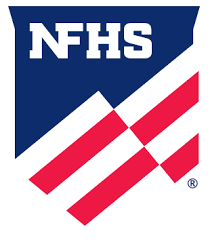(January 31, 2017) – The National Operating Committee on Standards for Athletic Equipment (NOCSAE) voted to move standards on football helmet and chest protector performance to final status at its Jan. 27 standards meeting in Phoenix. The standard to limit the football helmet’s maximum rotational forces involved in many concussions and the chest protector standard intended to significantly reduce the likelihood of sudden death from commotio cordis take effect in 2018.
NOCSAE’s new football helmet performance standard incorporates rotational accelerations in the pass-fail specifications. Manufacturers will be required to meet the new performance standard starting in June 2018.
“This is an extraordinary step forward in addressing concussion risks,” said Dr. Robert Cantu, NOCSAE Vice President and co-founder and Medical Director of the Concussion Legacy Foundation. “Since rotational accelerations are thought by the majority of neuroscientists to be more injurious to the brain than linear accelerations, it’s a significant advancement for NOCSAE to move to final status a rotational acceleration threshold in addition to their already existent linear acceleration threshold in their football helmet standard.”
NOCSAE also finalized the world’s first chest protector standard for commotio cordis, which is a heart rhythm disruption caused by a blow to the chest that is one of the leading causes of sudden cardiac death in young athletes in baseball and lacrosse. In conjunction with research funded by the Louis J. Acompora Memorial Foundation, NOCSAE funded more than $1.1 million in research to identify the specific cause of commotio cordis.
NOCSAE referenced the research to develop a chest protector standard intended to significantly reduce the likelihood of commotio cordis in baseball and lacrosse players. Although rare, catchers and goalies in these sports are typically the most vulnerable to commotio cordis. Approximately five to 15 athletes die every year from this syndrome and most of the deaths are males under the age of 14 who are often wearing chest protection.
The chest protector standard for commotio cordis goes into effect in January 2018.
“We are overwhelmed with gratitude,” said Karen Acompora of The Louis J. Acompora Memorial Foundation. “Losing our son Louis to commotio cordis was devastating to our family and friends, however, his death created a movement to end commotio cordis. With the new chest protector standard in place young athletes will be protected and their families will not have to be fearful of losing our most precious gift, our children.”





 Back
to News
Back
to News